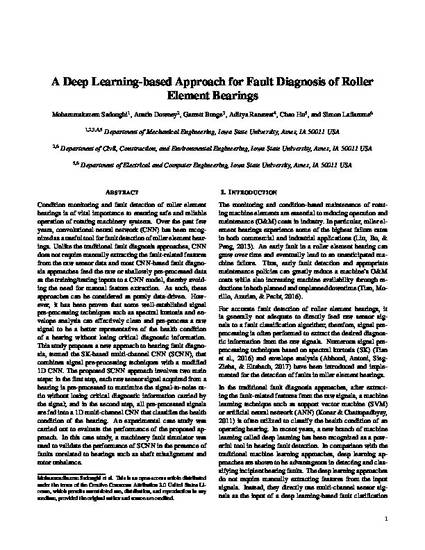
Condition monitoring and fault detection of roller element bearings is of vital importance to ensuring safe and reliable operation of rotating machinery systems. Over the past few years, convolutional neural network (CNN) has been recognized as a useful tool for fault detection of roller element bearings. Unlike the traditional fault diagnosis approaches, CNN does not require manually extracting the fault-related features from the raw sensor data and most CNN-based fault diagnosis approaches feed the raw or shallowly pre-processed data as the training/testing inputs to a CNN model, thereby avoiding the need for manual feature extraction. As such, these approaches can be considered as purely data-driven. However, it has been proven that some well-established signal pre-processing techniques such as spectral kurtosis and envelope analysis can effectively clean and pre-process a raw signal to be a better representative of the health condition of a bearing without losing critical diagnostic information. This study proposes a new approach to bearing fault diagnosis, termed the SK-based multi-channel CNN (SCNN), that combines signal pre-processing techniques with a modified 1D CNN. The proposed SCNN approach involves two main steps: in the first step, each raw sensor signal acquired from a bearing is pre-processed to maximize the signal-to-noise ratio without losing critical diagnostic information carried by the signal; and in the second step, all pre-processed signals are fed into a 1D multi-channel CNN that classifies the health condition of the bearing. An experimental case study was carried out to evaluate the performance of the proposed approach. In this case study, a machinery fault simulator was used to validate the performance of SCNN in the presence of faults unrelated to bearings such as shaft misalignment and rotor unbalance.
Available at: http://works.bepress.com/simon_laflamme/102/

This proceeding is published as Sadoughi, Mohammakazem, Austin Downey, Garrett Bunge, Aditya Ranawat, Chao Hu, and Simon Laflamme, "A Deep Learning-based Approach for Fault Diagnosis of Roller Element Bearings," 2018 Annual Conference of the Prognostics and Health Management Society, Proceedings of the Annual Conference of the PHM Society 10, no. 1 (2018). DOI: 10.1234/phmconf.2018.v10i1.526. Posted with permission.